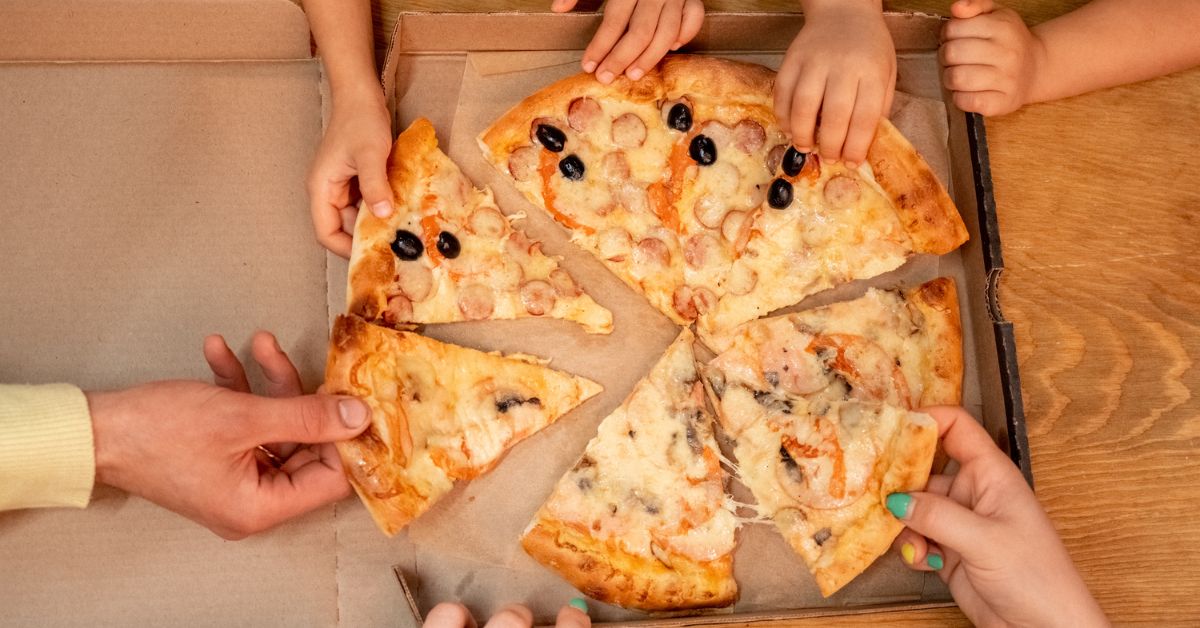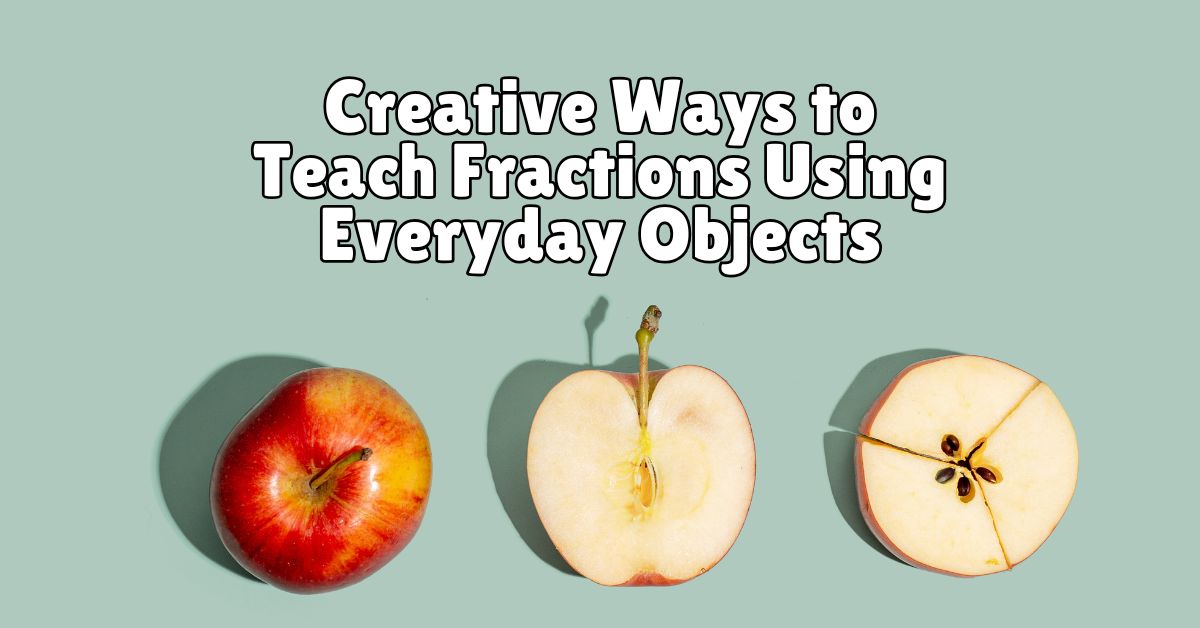Fractions can be a tricky concept for kids at first, but with the right approaches, they can become fun and engaging. One of the best ways to teach fractions creatively is by using everyday objects you already have at home. These hands-on activities not only make fractions easier to understand but also turn math lessons into memorable experiences.
Below, we’ll explore practical ways to teach fractions that parents homeschooling their kids can immediately put to use.
Why Everyday Objects Are Perfect for Teaching Fractions
Using items from your daily life helps bring abstract math concepts into the real world. Kids often find it easier to grasp fractions when they can see and touch what they’re dividing or measuring. Everyday objects also make math lessons feel less like work and more like play. Whether it’s slicing a sandwich or measuring ingredients for a recipe, fractions come alive when they’re tied to real activities.
Everyday objects also help kids build a stronger connection between math and the world around them. This approach prevents fractions from being isolated, “textbook-only” concepts and instead turns them into something kids can use in life. Here are some practical ways to get started using items you already have.
Everyday Objects for Teaching Fractions
With a little creativity, almost any item in your home can become a tool for learning fractions. Here are a few ideas to get you started:
- Kitchen Tools
The kitchen is an ideal classroom for fractions.
- Measuring Cups
Use measuring cups to teach how different fractions add up to a whole. For instance, show that two half-cups equal one cup and discuss how four quarter-cups make up the same amount. Ask questions like, “How many 1/3 cups do we need to make 1 whole cup?” - Cutlery and Plates
Divide portions like pizza slices, pies, or servings of cake to demonstrate fractions. You could cut a sandwich into two, four, or eight parts and discuss which part equals 1/2 or 1/8 of the whole sandwich. - Recipes
Cooking and baking require following fractional measurements like 1/4 teaspoon or 2/3 cup. Ask your child to help you double or halve a recipe, which reinforces their understanding of equivalent fractions.

- Legos and Building Blocks
Legos are excellent for demonstrating fractions visually.
- Assign different Lego bricks to represent fractions of a whole. For instance, a 2×4 brick can be the “whole,” while 2×2 or 1×2 bricks can represent halves or quarters.
- You can build a structure and then break it into smaller pieces, asking your child to identify what fraction of the whole each section represents.
- Use Lego graphs to compare fractions by stacking blocks of different “sizes” to represent 1/2, 1/3, and 1/4.
- Paper and Scissors
Using paper is a hands-on way to break fractions down visually.
- Fold a piece of paper into equal sections. For instance, fold it in half for 1/2, then into quarters, eighths, and so on. Unfold it and label each section with the corresponding fractional part.
- Cut shapes or pictures into equal parts. For example, cut a circle into six wedges or a square into nine smaller squares. Challenge your child to color or pick specific fractions of the shape (e.g., “Color 1/3 of the circle”).
- Coins and Money
Money introduces fractions in a way that feels relevant and practical to kids.
- Use coins to represent fractions of a dollar. A quarter is 1/4 of a dollar, and a dime is 1/10. Line them up and practice combining amounts to make sense of fractional values.
- Create problems like “If we have 3 quarters, what part of a dollar is that?” Discuss equivalent fractions using examples like “two 50-cent coins are the same as one dollar, which is represented as 1/1.”
- Toys and Games
Turn learning into playtime by involving toys.
- Use toy cars, action figures, or stuffed animals to divide groups into fractions. For example, if you have eight toy cars, separate them into two groups to demonstrate halves or into four groups for quarters.
- Board games with fraction elements, like Fraction Dominoes or fraction puzzles, also make math entertaining while reinforcing concepts.
- Fruit and Veggies
Snacks double as effective math tools.
- Slice fruit like apples, oranges, or bananas into halves, thirds, or quarters. Ask your child to identify what portion of the fruit you’ve eaten or what’s left.
- Grapes or carrot sticks can be grouped and divided into fractions. For example, “You have 12 grapes; if you eat 4, what fraction of the total is gone?”
Fun Fraction Teaching Ideas
Along with using everyday objects, there are several creative ways to make fractions engaging and meaningful.
Story Problems With Fractions
Kids often enjoy solving real-world stories. Create simple fraction-based scenarios they can relate to, such as dividing a group of friends into teams or sharing a treat. For example, “If 3 out of 5 friends share a pizza, what fraction of the group ate pizza?” These scenarios sharpen their reasoning and problem-solving skills.
Fraction Art Projects
Art is an invaluable tool for learning fractions. Provide your child with colored paper, scissors, and glue, and have them create fraction-themed artwork. They can cut out shapes, like circles or squares, and divide them into fractional parts for a collage.
Another idea is to create a fraction pie chart using colors. Draw a large circle and have your child shade specific sections according to instructions like “Color 1/3 blue, 1/4 red, and 3/12 green.”
Fraction Scavenger Hunt
Turn your home or yard into a fraction scavenger hunt. Write clues involving fractions, such as “Find something that is 1/2 empty” or “Look for an object that is divided into 4 equal parts.” This activity combines math with problem-solving and exploration.
Compare Fractions with Rulers
Use a ruler or a measuring tape to show fractional inches or centimeters. Have your child measure everyday objects, like books or toys, and identify fractions of measurements. For instance, if an object measures 3 1/2 inches, discuss what the fractional part represents.
Engaging Kids Through Interactive Learning
Interactive activities help kids stay engaged while learning fractions. It’s essential to keep the mood light and enjoyable so they associate fractions with fun, not frustration. By involving them in playful tasks or meaningful chores, you also improve retention.
For example, working together to solve fraction puzzles or challenges creates opportunities for collaboration and conversation. Kids are more likely to stay focused and curious compared to working through worksheets alone.
Finally, encouraging your child to explain their thinking out loud reinforces math concepts for them and gives you insight into how they’re grasping the material. By being patient and showing enthusiasm for their progress, you’ll make fractions less intimidating and more inviting.
Everyday Math Makes Lifelong Learners
Fractions don’t exist in isolation; they are part of everyday math. By teaching fractions creatively, you’re not only helping your child master important skills but also preparing them to think critically and make connections throughout their lives. Everyday items like measuring cups, toys, and fruit turn lessons into adventures, while creative activities like scavenger hunts and artwork inspire problem-solving and creativity.
Homeschooling gives you the freedom to tailor teaching in a way that works best for your child. With a little effort and imagination, you can transform a potentially challenging topic into something your kids look forward to learning about. By using everyday objects and fun activities, fractions can go from a dreaded subject to one of the highlights of math at home.





